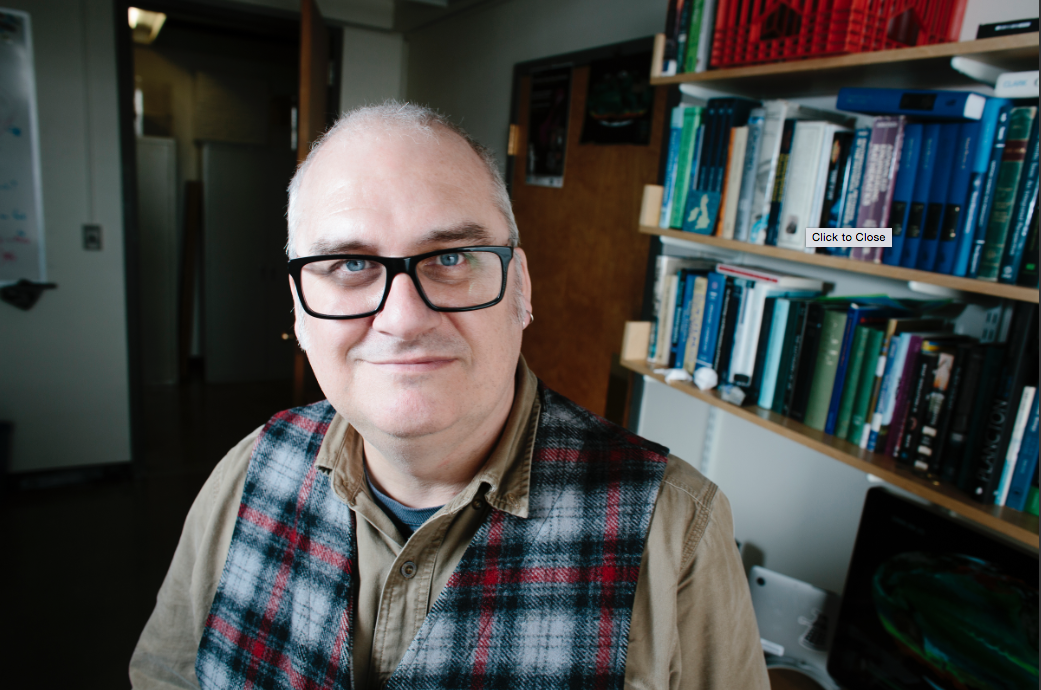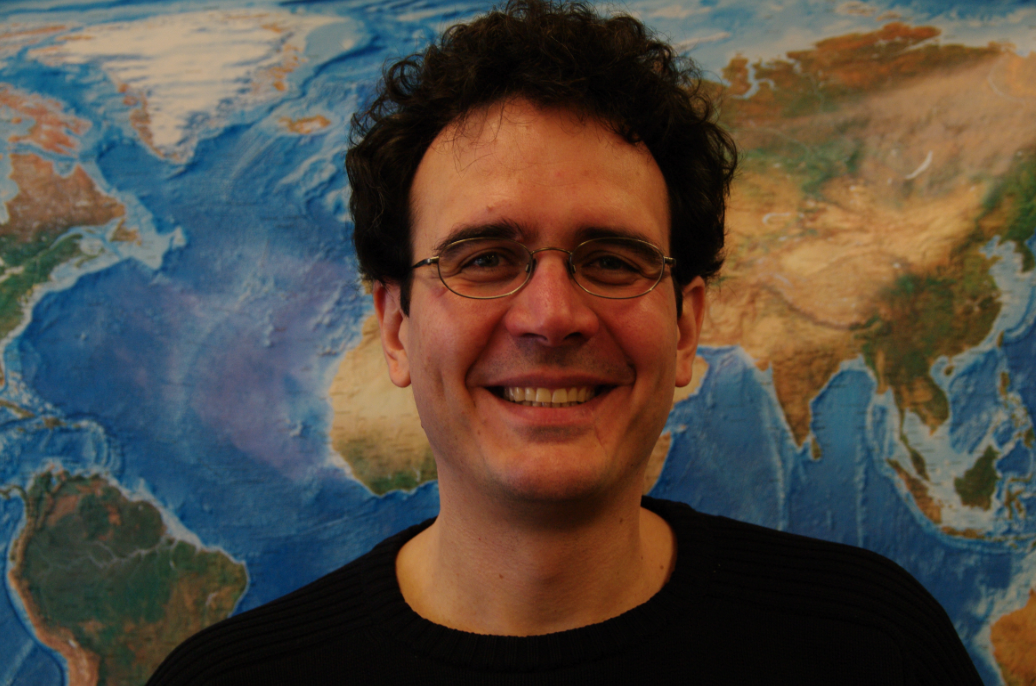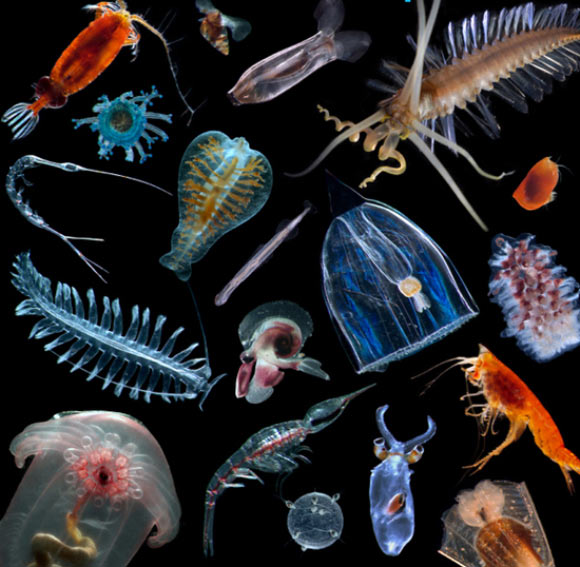story by Helen Hill

The Tara Oceans Expedition, perhaps the largest DNA sequencing effort ever undertaken for ocean science, kicked off formally sharing its myriad findings in the May 22, 2015 issue of Science. This month we report on researchers using MITgcm to explore the role of Agulhas Rings in plankton transport.
Agulhas rings provide the principal route for ocean waters to circulate from the Indo-Pacific to the Atlantic basin. However, while their influence on global ocean circulation is well known, their role in plankton transport has been largely unexplored.

This figure shows nitrogen stocks modeled using MITgcm along Agulhas ring tracks. Warmer colors indicate higher concentrations of nitrogen compounds. Image courtesy: Oliver Jahn
In Villar et al. (2015) Environmental characteristics of Agulhas rings affect interocean plankton transport Darwin Project researchers Mick Follows, Chris Hill and Oliver Jahn contributed their expertise modeling marine phytoplankton to help interpret in situ sampling data from a young Agulhas ring which indicated a marked change in plankton diversity along the path of the Agulhas.
The MIT Darwin Project develops and applies novel models of marine microbes and microbial communities, identifying the relationships of individuals and communities to their physical, biological and chemical environment, connecting cellular-scale processes to global microbial community structure. MITgcm provides the physical framework for its numerical experiments.
The Darwin team set to work to explore nitrogen cycling along the Agulhas ring track in experiments based on physical configurations integrated from 1992 to 1999 and constrained to be consistent with observed hydrography and altimetry. Their results suggest that the peculiar environment within the rings drives complex nitrogen cycling, which would shape community metabolism and biogeochemical signatures as the ring and associated plankton transit westward providing a possible selective mechanism contributing to the limited dispersal of Indian Ocean plankton populations into the Atlantic.
To find out more about this work contact: Mick, Chris or Oliver.
About the Researchers:

Mick began using MITgcm in the late 1990’s. He says current non-ocean-modeling pastimes include grant applications and annual reports!

Chris has been working on the MITgcm since early in 1992. This month’s extra-MITgcm project: Exploring the art and practice of southern BBQ.

Oliver started using MITgcm in 2007. When not hard at work modeling the ocean, he enjoys sailing, skating, and dancing, but most lately finding new ways to make his baby son Alexander laugh…
This Month’s Featured Publication
- Emilie Villar et al. (2015), Environmental characteristics of Agulhas rings affect interocean plankton transport, Science 22 May 2015: Vol. 348 no. 6237, doi: 10.1126/science.1261447
Other New Publications this Month
Matthew H. Alford et al. (2015), The formation and fate of internal waves in the South China Sea, Nature 521, 65–69 (07 May 2015) doi:10.1038/nature14399
Joseph M. D’Addezio, Bulusu Subrahmanyam, Ebenezer S. Nyadjro, and V.S.N. Murty (2015), Seasonal variability of salinity and salt transport in the Northern Indian Ocean, Journal of Physical Oceanography 2015 ; e-View, doi: 10.1175/JPO-D-14-0210.1
Liam Brannigan, David P. Marshall, Alberto Naveira-Garabato, A.J. George Nurser (2015), The seasonal cycle of submesoscale flows, Ocean Modelling
Available online 22 May 2015, doi: 10.1016/j.ocemod.2015.05.002
G. Forget, J.-M. Campin, P. Heimbach, C. N. Hill, R. M Ponte, and C. Wunsch (2015), ECCO version 4: an integrated framework for non-linear inverse modeling and global ocean state estimation, Geosci. Model Dev. Discuss., 8, 3653–3743, 2015 www.geosci-model-dev-discuss.net/8/3653/2015/ doi:10.5194/gmdd-8-3653-2015
Johannes Gemmrich and Jody M. Klymak (2015), Dissipation of internal wave energy generated on a critical slope, Journal of Physical Oceanography 2015 ; e-View
doi: 10.1175/JPO-D-14-0236.1
David Ferreira and John Marshall (2015), Freshwater transport in the coupled ocean-atmosphere system: a passive ocean, Ocean Dynamics
July 2015, Volume 65, Issue 7, pp 1029-1036, doi: 10.1007/s10236-015-0846-6
Takamitsu Ito et al. (2015), Sustained growth of the Southern Ocean carbon storage in a warming climate, Geophysical Research Letters, online 4 June 2015, doi: 10.1002/2015GL064320
K. G. Lamb and A. Warn-Varnas (2015), Two-dimensional numerical simulations of shoaling internal solitary waves at the ASIAEX site in the South China Sea, Nonlin. Processes Geophys., 22, 289–312, 2015 www.nonlin-processes-geophys.net/22/289/2015/ doi:10.5194/npg-22-289-2015
Jessica K. Makowski, Don P. Chambers, Jennifer A. Bonin (2015), Using ocean bottom pressure from the gravity recovery and climate experiment (GRACE) to estimate transport variability in the southern Indian Ocean, Journal of Geophysical Rsearch Oceans, doi: 10.1002/2014JC010575
Meike Sena Martins, Nuno Serra, and Detlef Stammer (2015),
Spatial and temporal scales of sea surface salinity variability in the Atlantic Ocean, Journal of Geophysical Research Oceans, published online 15 June 2015, doi: 10.1002/2014JC010649
Jean A. Mensa (2015) Eulerian Dynamics and Lagrangian Transport at the Submesoscale and Below, Open Access Dissertations. Paper 1416.
http://scholarlyrepository.miami.edu/oa_dissertations/1416
Rui M. Ponte, Ayan H. Chaudhuri, and Sergey V. Vinogradov (2015), Long period tides in an atmospherically driven, stratified ocean, Journal of Physical Oceanography 2015 ; e-View, doi: 10.1175/JPO-D-15-0006.1
Hamidreza Shirkhani, Abdolmajid Mohammadianb, Ousmane Seidouc, Hazim Qiblaweyd (2015), Analysis of triangular C-grid finite volume scheme for shallow water flows, Advances in Water Resources, Volume 82, August 2015, Pages 176–195, doi: 10.1016/j.advwatres.2015.04.011Climate Dynamics
May 2015, doi: 10.1007/s00382-015-2637-7
A. Vidard, P.-A. Bouttier, and F. Vigilant (2015), NEMOTAM: tangent and adjoint models for the ocean modelling platform NEMO Geosci. Model Dev., 8, 1245–1257, 2015 www.geosci-model-dev.net/8/1245/2015/ doi:10.5194/gmd-8-1245-2015
Emilie Villar et al. (2015), Environmental characteristics of Agulhas rings affect interocean plankton transport, Science 22 May 2015: Vol. 348 no. 6237, doi: 10.1126/science.1261447
Ian Wong et al. (2015), 3.6 AND 4.5 μm Phase Curves of the Highly-Irradiated Eccentric Hot Jupiter WAST-14B, arXiv:1505.03158 [astro-ph.EP] 12 May 2015
Chunyan Zhou, Ping Dong, Guangxue Li (2015), A numerical study on the density driven circulation in the Yellow Sea Cold Water Mass, Journal of Ocean University of China, June 2015, Volume 14, Issue 3, pp 457-463, doi: 10.1007/s11802-015-2759-x
Do you have news about research using MITgcm? We are looking for contributions to these pages. If you have an interesting MITgcm project (ocean, atmosphere, sea-ice, physics, biology or otherwise) that you want to tell people about, get in touch. To make a post, contact Helen

